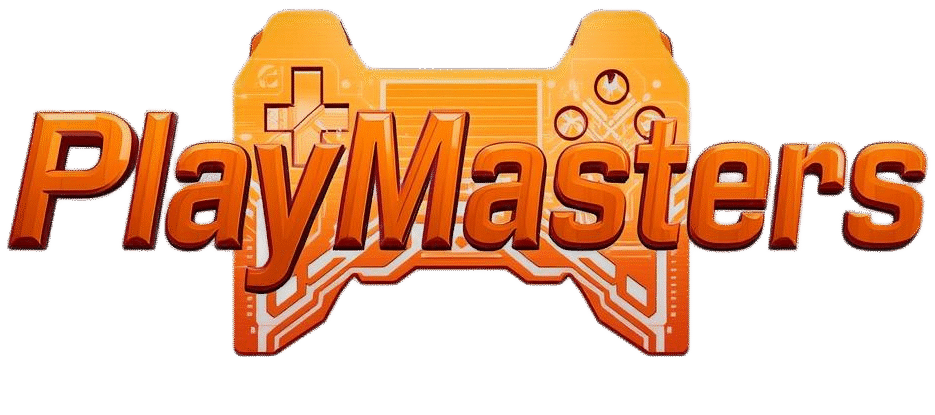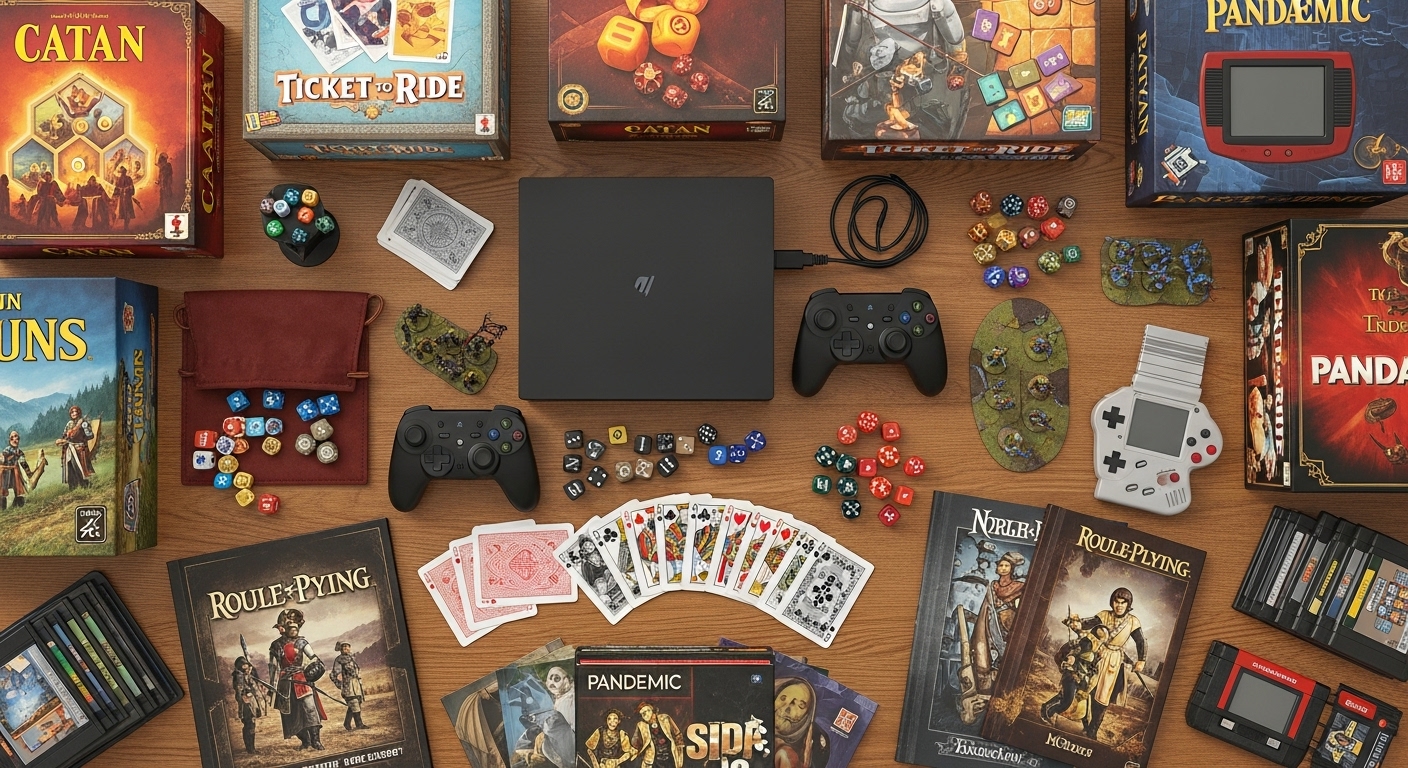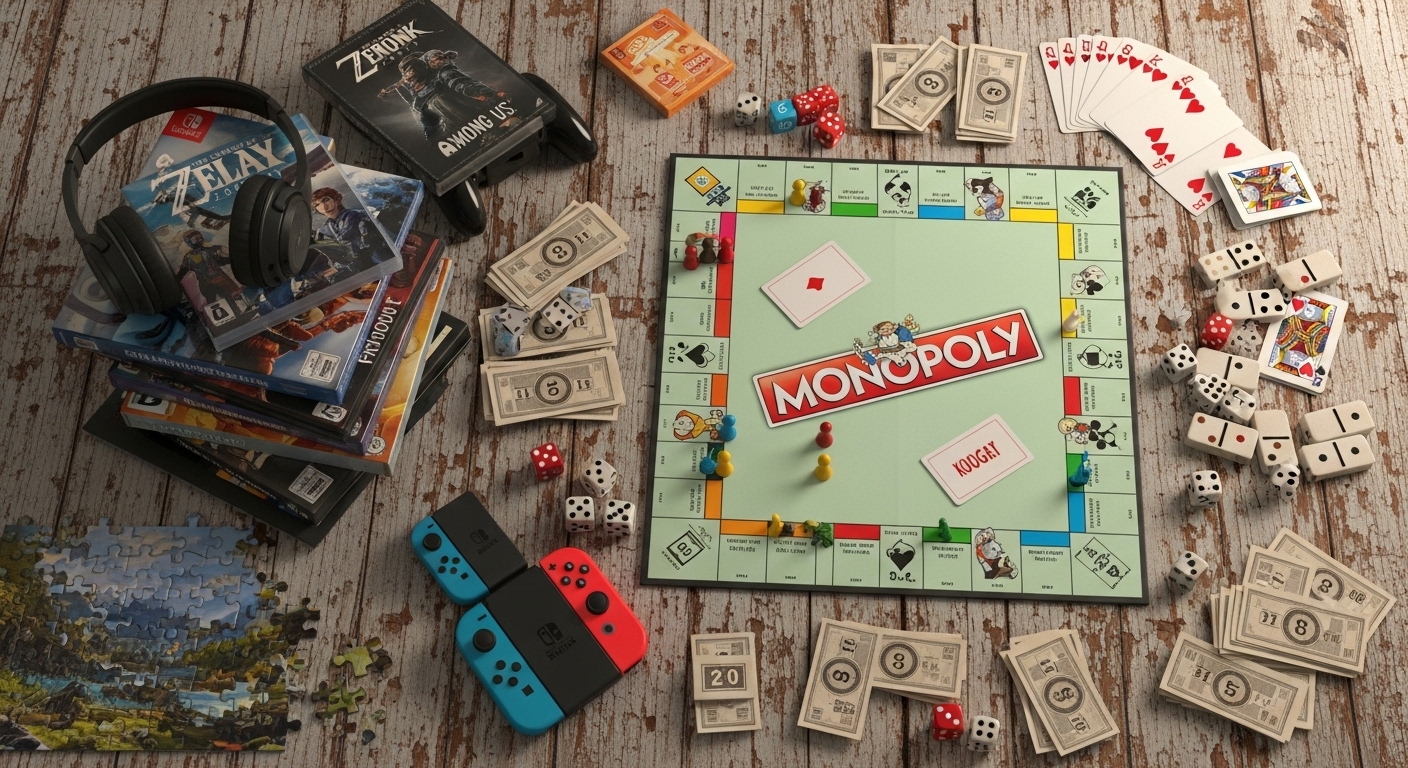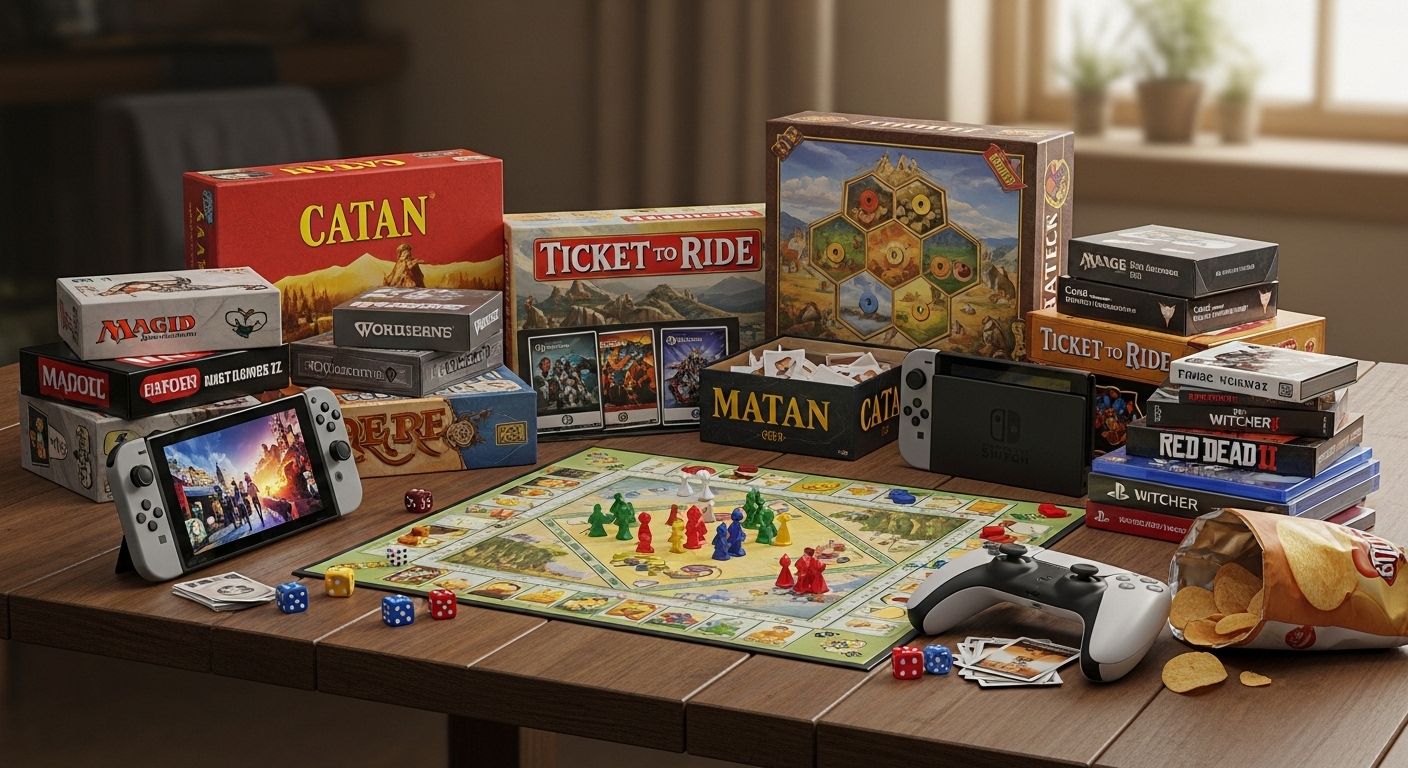Introduction
In the world of video games, visuals often take center stage, but there’s another element just as powerful—soundtracks. Music in gaming is not merely background noise; it’s an emotional thread that ties the player to the story, the characters, and the overall experience. From the earliest arcade tunes to today’s fully orchestrated compositions, soundtracks have become one of the most essential components of game design. They influence how we play, how we feel, and how we remember a game long after we’ve finished it.
This blog explores the profound impact of game soundtracks, their evolution over time, their role in storytelling, and how they shape the emotional and psychological connection between players and the digital worlds they explore.
The Early Days of Game Music
When video games first appeared in the late 1970s and early 1980s, technology placed strict limitations on what could be achieved musically. The sounds were basic, consisting of short, looping tones created by simple chips. Despite this simplicity, those early compositions became unforgettable.
Titles like Pac-Man, Super Mario Bros., and The Legend of Zelda used music to establish rhythm and identity. These tunes had to be catchy and repetitive, both because of hardware constraints and because they needed to engage players in a continuous loop. The music of that era was bright, minimal, and instantly recognizable.
Though limited, early composers were innovative. They used melody and timing to create atmosphere and urgency, laying the foundation for music as an integral part of gaming rather than an afterthought.
The Rise of Iconic Game Themes
As gaming hardware evolved, so did the ability to produce more complex and expressive soundtracks. The 16-bit era introduced richer sound palettes and more memorable compositions. Games like Final Fantasy VI, Chrono Trigger, and Sonic the Hedgehog showcased music that was both emotionally evocative and technically impressive.
These soundtracks gave players something beyond gameplay—they gave them identity. The themes became part of gaming culture, instantly recognizable even decades later. The Super Mario Bros. theme, composed by Koji Kondo, became synonymous with gaming itself. Similarly, Nobuo Uematsu’s Final Fantasy scores brought cinematic grandeur to the medium, showing that video game music could rival that of movies in emotional power.
The melodies from these classics continue to resonate today, often being remixed, orchestrated, or performed live in concerts dedicated to game music.
Music as a Tool for Emotion
Game soundtracks are one of the most powerful tools for shaping emotion. They can make players feel tension, joy, fear, or sadness. Unlike film scores, which follow a fixed timeline, video game music must adapt dynamically to player actions. This interactivity adds a unique dimension to how music influences emotions.
In action games, fast-paced tracks heighten excitement and adrenaline. In horror games, subtle ambient sounds and eerie melodies build dread and suspense. In adventure and role-playing games, orchestral pieces or gentle piano tunes evoke wonder and nostalgia.
One of the most iconic examples of emotional game music is Journey. Its soundtrack guides players through a wordless narrative, using crescendos and motifs to reflect progress, struggle, and triumph. The result is an experience that feels deeply personal and emotional without a single spoken word.
The Role of Soundtracks in Storytelling
Game music is more than accompaniment—it’s storytelling. Through rhythm, tone, and melody, composers communicate character emotions, world-building, and narrative progression.
For example, in The Legend of Zelda: Ocarina of Time, the use of different musical themes for each region helps define the world’s diversity. Each tune evokes the spirit of its environment, from the peaceful Kokiri Forest to the mysterious Lost Woods. The music serves as both navigation and narrative.
In Undertale, the soundtrack changes depending on player choices, reinforcing the consequences of actions. Themes evolve or distort to match emotional tone, connecting gameplay decisions directly to musical expression.
Similarly, Red Dead Redemption 2 uses a dynamic soundtrack that adjusts based on player behavior and story moments. The transition from quiet harmonica tunes during exploration to emotional orchestration during key story events strengthens immersion and narrative depth.
How Sound Enhances Immersion
Immersion is one of the core goals of video games, and music plays a central role in achieving it. A well-crafted soundtrack draws players into the world, blurring the line between fiction and reality.
In open-world games like The Elder Scrolls V: Skyrim, the sweeping orchestral score enhances the feeling of vastness and adventure. Players often recall not just the gameplay moments but the exact music that played as they explored new lands or fought powerful enemies.
In contrast, minimalist sound design can enhance immersion in subtler ways. Games like Inside or Limbo use sparse, ambient sounds that heighten tension and focus, emphasizing the environment and emotional tone rather than melody.
Whether grand or quiet, music acts as an emotional compass, guiding players through their journey and deepening the sense of presence within the game world.
The Psychology Behind Game Music
The relationship between soundtracks and the human brain is profound. Music triggers emotional and physiological responses, affecting heart rate, focus, and mood. In gaming, this relationship is amplified because players are actively involved in the experience.
Fast-paced music can improve reaction time and alertness during combat or racing sequences. Calm or rhythmic music helps players focus during puzzles or exploration. Emotional soundtracks activate empathy, allowing players to connect with characters and events more deeply.
Furthermore, the use of recurring motifs creates familiarity and anticipation. Players associate specific melodies with particular feelings, characters, or events, reinforcing the emotional structure of the narrative.
This is why hearing a few notes from a favorite game can instantly bring back vivid memories of playing it. The music becomes part of the personal experience, deeply embedded in the player’s memory.
The Collaboration Between Composers and Developers
Creating a great game soundtrack is a collaborative effort. Composers work closely with developers, designers, and sound engineers to ensure that music aligns with the game’s tone, pacing, and aesthetic.
In story-driven games, composers often receive scripts or concept art to understand the world and emotional arcs. In dynamic or open-world games, they compose modular pieces that can shift seamlessly depending on gameplay. This approach allows music to adapt in real time, maintaining immersion and emotional flow.
The collaboration process is as creative as it is technical. Composers must balance artistic expression with functional design, ensuring that music enhances gameplay rather than distracting from it.
The Evolution of Technology and Sound Quality
Advances in technology have dramatically changed how game music is composed, produced, and experienced. Early games relied on chiptune and synthesized sounds due to hardware limits. As consoles and computers grew more powerful, games began featuring recorded instruments, full orchestras, and dynamic audio systems.
Modern sound engines can blend multiple layers of music, transitioning smoothly as gameplay changes. For example, a calm exploration theme can intensify into a battle motif seamlessly as enemies appear. This adaptive system keeps the experience cohesive and emotionally engaging.
Additionally, surround sound and high-quality audio hardware have elevated how players perceive music. The spatial dimension of sound enhances realism, particularly in virtual reality and cinematic titles.
The Cultural Impact of Game Soundtracks
Game soundtracks have grown beyond the gaming community to influence mainstream culture. Many iconic themes have become part of popular music, performed in concerts and symphonies worldwide. Events like “Video Games Live” and orchestral performances of The Legend of Zelda or Final Fantasy attract massive audiences, bridging the gap between classical music and gaming.
Moreover, game composers have gained recognition as artists in their own right. Names like Nobuo Uematsu, Yoko Shimomura, Jesper Kyd, and Koji Kondo are celebrated for their contributions to the art form. Their compositions are studied, remixed, and cherished across generations.
The inclusion of popular music in games also reflects cultural trends. Titles like Grand Theft Auto and Tony Hawk’s Pro Skater introduced players to new genres and artists, shaping musical tastes and expanding cultural influence.
Soundtracks and Player Identity
For many players, a game’s soundtrack becomes part of their personal identity. The music that accompanies moments of triumph, struggle, or discovery becomes intertwined with individual memories.
Gamers often create playlists of favorite game tracks, listen to them while studying or working, and use them as emotional anchors. Music becomes a way to relive experiences and express their connection to specific games or characters.
This bond demonstrates how soundtracks transcend entertainment—they become part of who players are.
Accessibility and Emotional Inclusion
Soundtracks also play a vital role in accessibility. For visually impaired players, sound cues and musical changes serve as navigational tools. Subtle shifts in melody or tempo can indicate danger, success, or progression, helping players engage fully without relying solely on visuals.
Music also ensures emotional inclusion. It connects players across cultures, languages, and abilities. Even if someone cannot understand the dialogue or text, they can still feel the emotions through the universal language of music.
The Business of Game Music
The growth of digital platforms has turned game soundtracks into profitable and influential industries. Soundtrack albums are now released alongside games, often charting on music platforms. Collectors seek vinyl records, and composers tour globally to perform their work.
This commercial success highlights the importance of music in gaming’s overall ecosystem. It’s not just a supporting element—it’s a product, an art form, and a cultural bridge.
The Future of Game Soundtracks
As technology continues to evolve, the future of game music looks more interactive and immersive than ever. Artificial intelligence and procedural generation will allow soundtracks to respond even more dynamically to player behavior.
Virtual reality will make sound an even more critical component of immersion, using spatial audio to create truly lifelike experiences. Composers will continue pushing boundaries, blending genres, experimenting with adaptive music, and collaborating across art forms.
Music will remain one of the most powerful storytelling tools in gaming, evolving alongside the medium itself.
Conclusion
The impact of game soundtracks extends far beyond the screen. They define atmosphere, guide emotion, and enrich storytelling. From the pixelated melodies of early arcade machines to the sweeping orchestras of modern blockbusters, music has been a constant companion in the evolution of gaming.
It connects players to the world they explore, the characters they love, and the memories they cherish. It turns gameplay into art and interaction into emotion. The legacy of game soundtracks is not just in the notes or melodies but in the experiences they create—experiences that linger long after the controller is set down.
Game music is, and always will be, the heartbeat of the gaming experience—a powerful reminder that in every great adventure, the soundtrack is what gives it soul.




